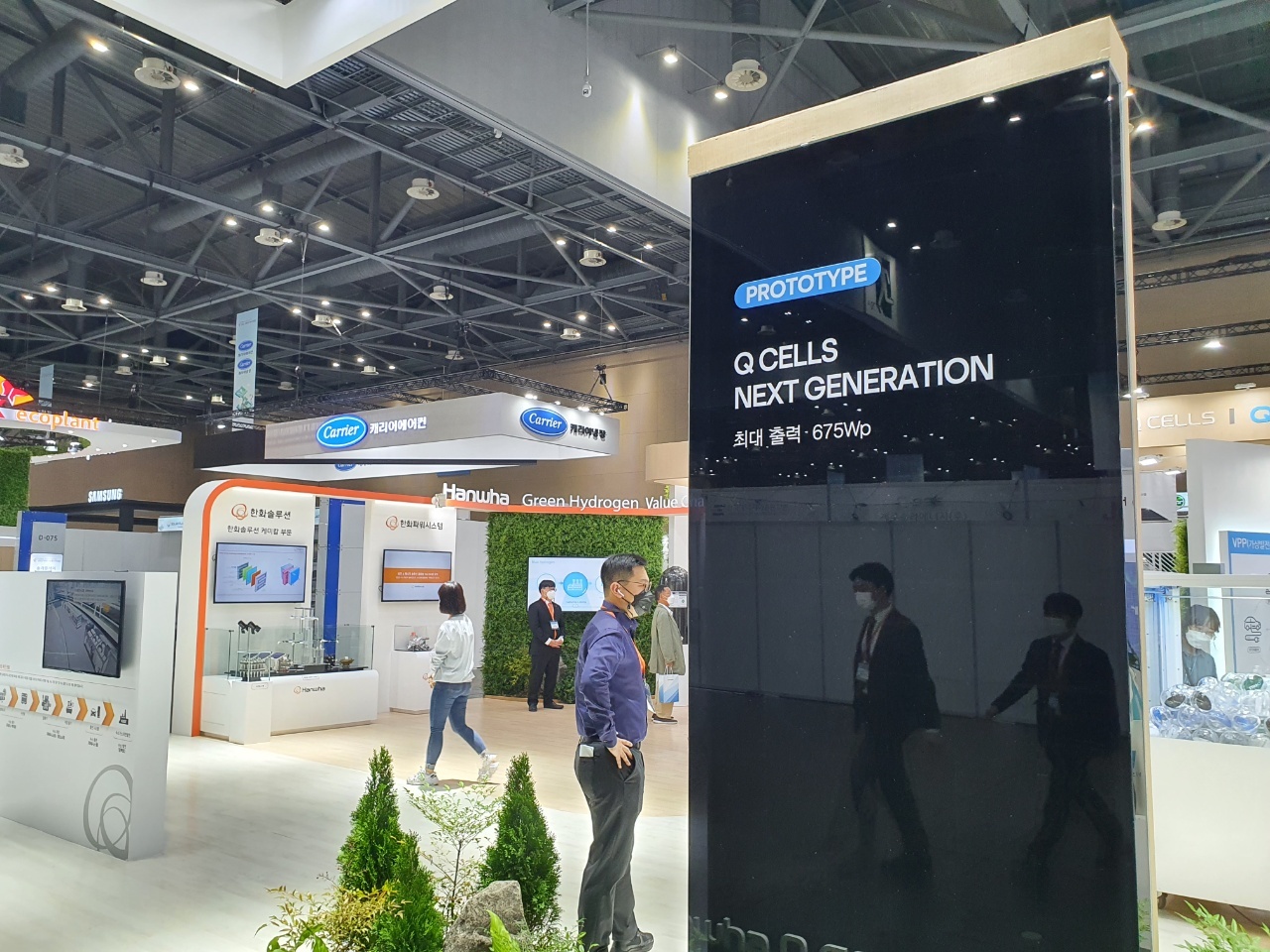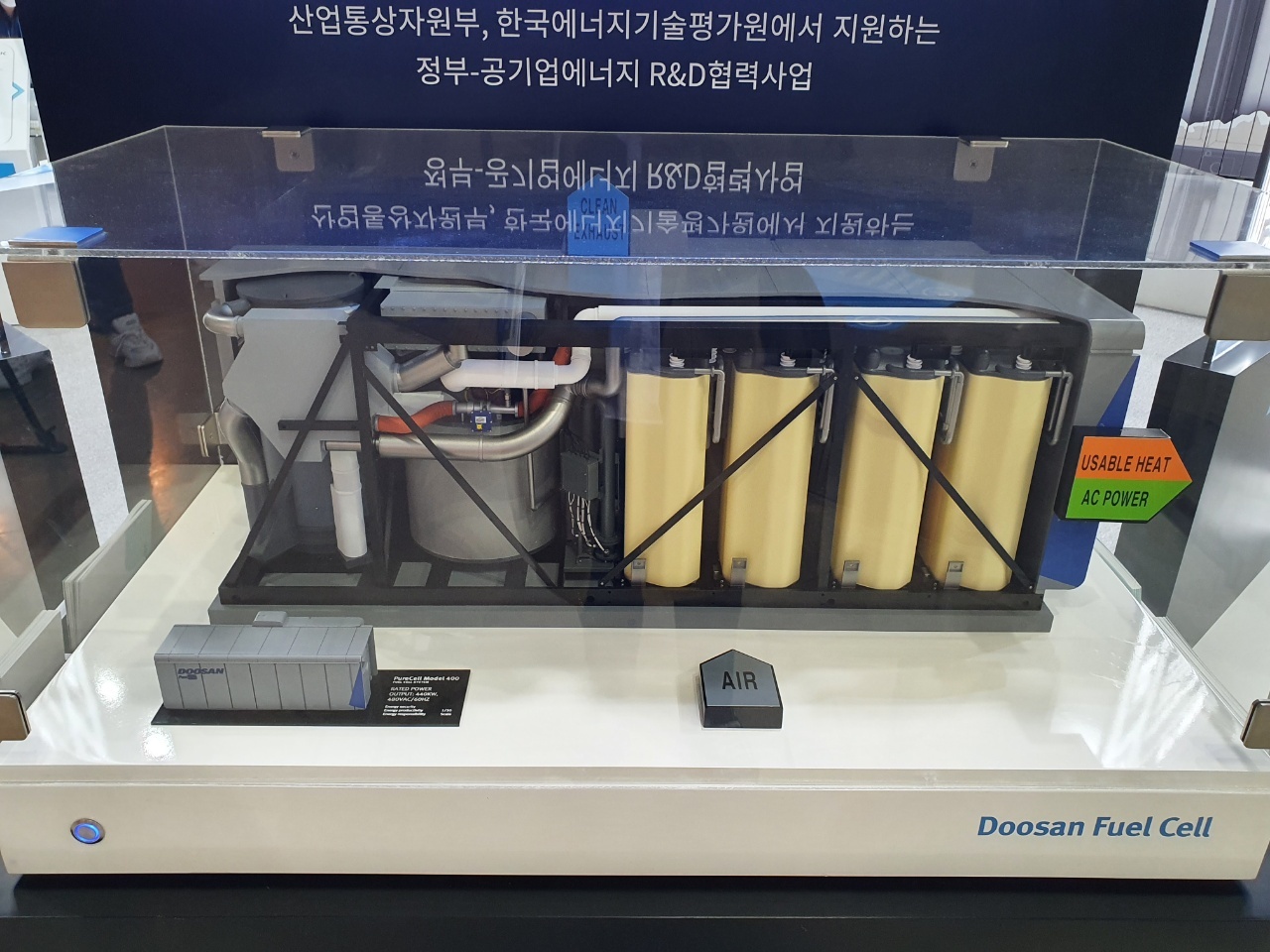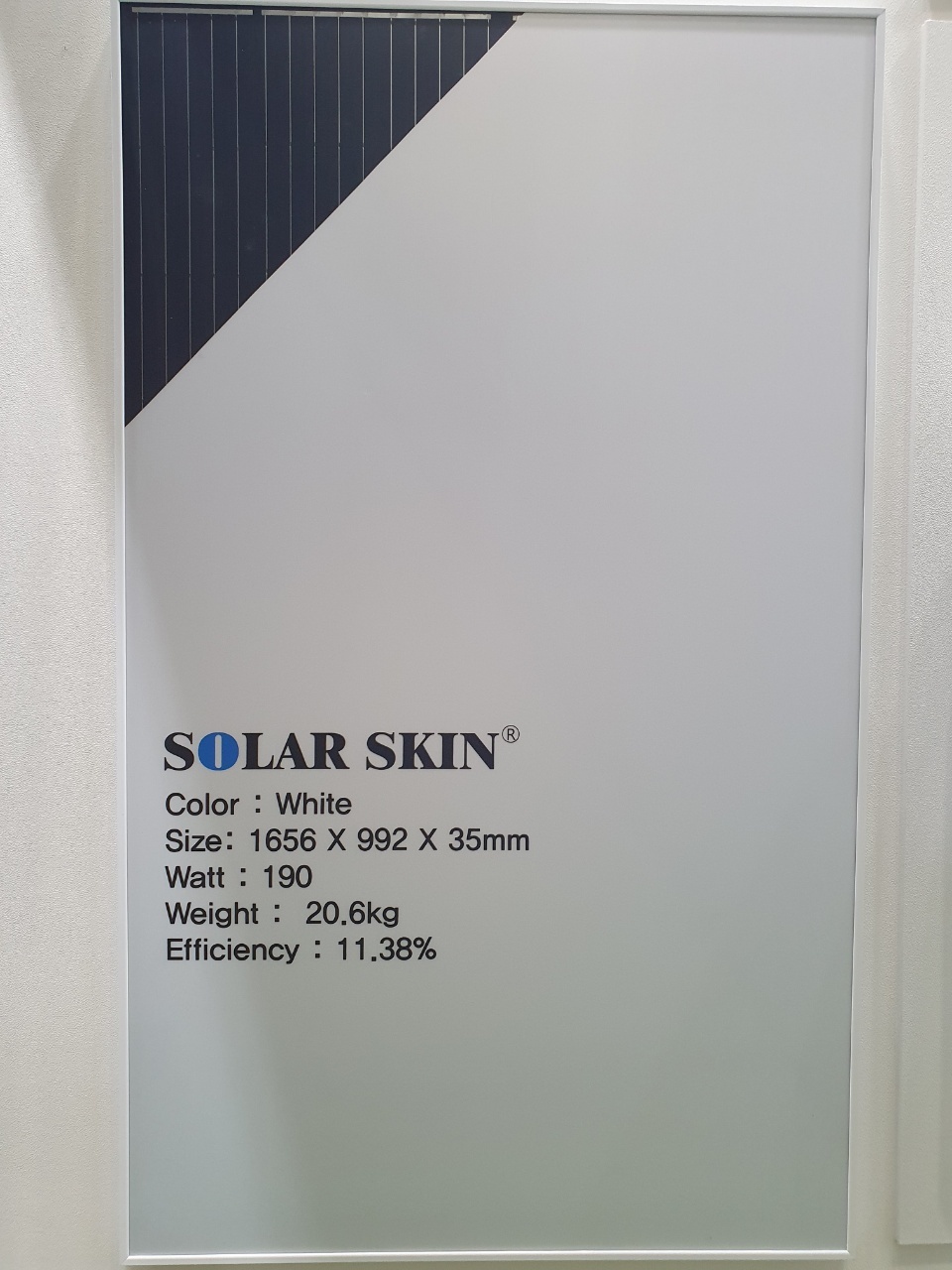[From the Scene] Firms offer carbon neutrality answers
At Net Zero Expo, Hanwha, Doosan, Posco, SK show how to make carbon neutrality a reality
By Kim Byung-wookPublished : Oct. 13, 2021 - 16:19

Banners reading “No photos allowed” in bold letters are clearly placed right next to prototypes of Hanwha Q Cells’ next-generation tandem solar cells.
Despite the warning, visitors couldn’t resist taking out their smartphones to take photos of the black, rectangular chips slowly rotating inside glass spheres.
At the Net Zero Expo, the nation’s biggest energy exhibition that kicked off at Kintex in Ilsan, Gyeonggi Province, on Wednesday, it was clear that the things that are not supposed to be photographed were stealing the show.
Hanwha Q Cells officials at the booth were shy to give out details of the tandem cells, except that they offer maximum power output of 675 watt-peak, which is staggeringly higher than existing solar cells in the market.
But nonetheless, there was no doubt that the tandem cells, scheduled for commercialization in 2023, would play a key role in Korea’s transition to green hydrogen, an expensive goal at the moment.
To bring down the cost of green hydrogen, which uses electricity generated by renewable sources to break water into hydrogen and oxygen, the efficiency of solar cells or wind turbines are the key. This is why the success of green hydrogen hinges greatly on tandem cells, which are more powerful and efficient than conventional solar cells.
Another factor blocking the commercialization of green hydrogen is electrolysis machines. When those machines break water into oxygen and hydrogen, they simply eat up too much electricity. Aware of this issue, Hanwha displayed an advanced AEMEC (anoin exchange membrane water electrolysis) machine, which consumes far less energy.
Despite the warning, visitors couldn’t resist taking out their smartphones to take photos of the black, rectangular chips slowly rotating inside glass spheres.
At the Net Zero Expo, the nation’s biggest energy exhibition that kicked off at Kintex in Ilsan, Gyeonggi Province, on Wednesday, it was clear that the things that are not supposed to be photographed were stealing the show.
Hanwha Q Cells officials at the booth were shy to give out details of the tandem cells, except that they offer maximum power output of 675 watt-peak, which is staggeringly higher than existing solar cells in the market.
But nonetheless, there was no doubt that the tandem cells, scheduled for commercialization in 2023, would play a key role in Korea’s transition to green hydrogen, an expensive goal at the moment.
To bring down the cost of green hydrogen, which uses electricity generated by renewable sources to break water into hydrogen and oxygen, the efficiency of solar cells or wind turbines are the key. This is why the success of green hydrogen hinges greatly on tandem cells, which are more powerful and efficient than conventional solar cells.
Another factor blocking the commercialization of green hydrogen is electrolysis machines. When those machines break water into oxygen and hydrogen, they simply eat up too much electricity. Aware of this issue, Hanwha displayed an advanced AEMEC (anoin exchange membrane water electrolysis) machine, which consumes far less energy.

Meanwhile, Doosan Fuel Cell offered a solution to address insufficient charging infrastructure for electric vehicles by utilizing its Tri-gen fuel cells.
At its booth, Doosan Fuel Cell exhibited a mock-up of Tri-gen fuel cells and explained how they can serve as an alternative to EV chargers, which require additional grid infrastructure.
However, Tri-gen fuel cells, which basically look like giant containers, can generate heat and electricity with hydrogen and serve as EV chargers without the support of nearby infrastructure. All the better, as Tri-gen fuel cells are equipped with hydrogen tanks inside, they can become hydrogen chargers at the same time.
At its booth, Doosan Fuel Cell exhibited a mock-up of Tri-gen fuel cells and explained how they can serve as an alternative to EV chargers, which require additional grid infrastructure.
However, Tri-gen fuel cells, which basically look like giant containers, can generate heat and electricity with hydrogen and serve as EV chargers without the support of nearby infrastructure. All the better, as Tri-gen fuel cells are equipped with hydrogen tanks inside, they can become hydrogen chargers at the same time.

On top of major players, small and mid-sized companies grabbed attention with their unique technologies, including Shinsung E&G, a local solar module and clean room manufacturer.

Shinsung E&G’s booth showcased a “solar skin” panel as a solution for zero-energy buildings. The solar skin panel, which hung on a white wall of the booth, looked almost identical in terms of color, and was first mistaken as a piece of contemporary art rather than a solar panel.
As the name suggests, Shinsung E&G’s solar skin panel covers the exterior with a thin film of matching color with the surrounding environment, adding aesthetics to otherwise boring solar panels.
As the name suggests, Shinsung E&G’s solar skin panel covers the exterior with a thin film of matching color with the surrounding environment, adding aesthetics to otherwise boring solar panels.

According to an Shinsung E&G official, the skin solar panel, despite the thin film on the cover, offers an efficiency of 11.38 percent.
















![[KH Explains] Hyundai's full hybrid edge to pay off amid slow transition to pure EVs](http://res.heraldm.com/phpwas/restmb_idxmake.php?idx=652&simg=/content/image/2024/04/18/20240418050645_0.jpg&u=20240418181020)

![[Today’s K-pop] Zico drops snippet of collaboration with Jennie](http://res.heraldm.com/phpwas/restmb_idxmake.php?idx=642&simg=/content/image/2024/04/18/20240418050702_0.jpg&u=)